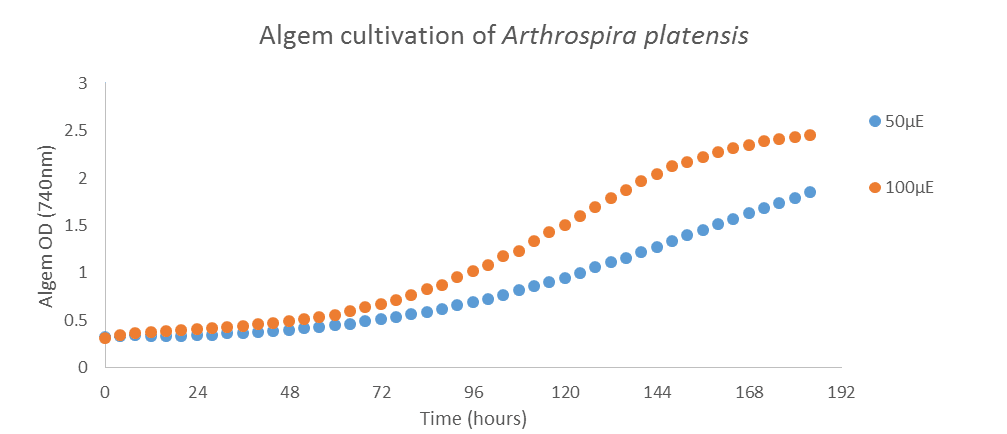Get in touch
555-555-5555
mymail@mailservice.com
Cultivation of Arthrospira platensis - ALG App011
algenuity • May 09, 2017
Background
Arthrospira
platensis (commonly referred to as Spirulina
, despite belonging to a morphologically distinct genus) is a filamentous cyanobacterium characterised by its beneficial nutritional content, left handed open helical form, and ability to grow under highly alkaline conditions. A. platensis
is protein rich and has been utilised as a traditional foodstuff in multiple cultures, most notably in Central America and in the region surrounding Lake Chad. Recently A. platensis
has experienced a resurgence as a health food and a source of the blue pigment phycocyanin for use as a food colourant.
Experimental Design
An A. platensis
(SAG 21.99) starter culture was inoculated from solid medium into AlgaLabs AP medium and cultivated at 40μE, 25°C to late log phase. The culture was then diluted ten fold and split to give two equivalent 400ml cultures for growth in the Algem. The profile used consisted of continuous white light at either 50 or 100μE at 26°C with mixing at 120rpm. CO2 was provided on a pH modulated basis, with the pH kept level at 9.
Results
A. platensis
grew well under both conditions (despite a long lag period), with faster growth seen at 100μE.
Figure 1 - Algem growth profile for A. platensis grown at 26°C and pH 9 with either 50 or 100μE white light
Discussion
As expected, the higher light intensity resulted in a more productive log phase, and a slightly more rapid exit from lag phase. Under phototrophic conditions, growth is often limited by light intensity, particularly at higher cell densities where self-shading becomes a factor. Now that successful cultivation of A. platensis
in the Algem has been demonstrated, the logical next step would be to run ramped light and temperature profiles to establish optimal conditions for this organism.
PDF Version:
© 2024
Algenuity Limited
Registered in the United Kingdom No: 12456594
Site design by Ibby Tarafdar Creative
© 2024
Algenuity Limited. Registered in the United Kingdom No: 12456594
Site design by Ibby Tarafdar Creative



